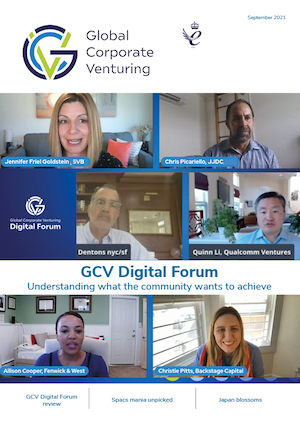A Taiwanese industry association and Global Corporate Venturing jointly organised a second semiconductor, artificial intelligence (AI) and quantum computing-themed panel held under Chatham House Rule on July 27, after a similar discussion in late April.
The latest panel featured multiple Taiwanese corporate venturers, who were joined by their global counterparts based in Japan, China, the United States and Israel. An executive from a government-backed vehicle hosted the panel.
The corporate investor who kicked off the meeting pointed out that there were currently three trends in the AI investing scene in their home country: core AI technology, AI applied in different verticals and chips. The entrepreneurs in the AI ecosystem are focusing on parallel computing platforms, for example, in order to compete with their US peers.
Another corporate venturing executive then explained that their fund had backed various AI accelerator chip companies that cover areas such as inference processors. In the AI space, the practice is not to only separate inference and training but also to distinguish datacentre and edge computing, the last one is particularly difficult to tackle given it is a highly fragmented market, they said.
Their fund invested in an edge AI technology developer that was successful but it would be hard to repeat the feat or further grow the business, they acknowledged. On the data centre side, the major trend in the past few years is to have access to memory given the larger parameters.
Become software developers
Another tendency is for AI accelerator chip companies to become software developers. Software is increasingly more important and challenging than chip development itself. They added that typically the companies are tasked with developing peripheral component interconnect express-based cards or the full appliance. Though admitting it is not probable to compete with larger corporations but they believe they will see more coming from startup companies and there is still room for disruption in this space.
Another corporate venturer added that edge devices went beyond their traditional definition, and the products such as cameras and cars can also be classified under the category. Before the fund commits to an AI company, it tries to identify augmented and virtual reality as well as other edge device applications.
A speaker representing a local corporate VC fund agreed with the first two panellists and said they were excited about the development of the space while recognising that it is becoming more challenging to explore.
“First of all, the incumbents of the edge have all been treating AI as a core feature or with high priority,” they said. “But meanwhile, there is the notion that domain-specific architecture has become feasible…There is now more room for specific applications and specialised architectures that is enabled by AI or domain-specific computing that made the diversity from the chipset architecture possible.”
A fourth panellist representing a corporate venture capital (CVC) unit added that as their corporate parent focuses on industrial robotics devices, AI performance and security are both important aspects to address. They also noted that their investments usually have mergers and acquisitions in mind.
Another executive of the CVC subsidiary of an industrial conglomerate said AI is not necessarily a good focus for all funds. They agreed that AI is a fragmented industry and it is not easy to define which device is universal for solving a specific problem. Their fund focuses on companies are working on technologies and products that can improve and solve a computing problem, including in-memory computing products.
A fifth participant said their corporate venturing unit focused on the sovereign component in AI and electronic design automation (EDA) tools, adding that EDA software is a more domain-specific technology, so there is still a long way to go to have a more user-friendly version.
Hyperscale computing
Hyperscale computing is a crucial focus area, said a sixth speaker participating on behalf of a global corporate venturing fund. They said the most important part was to win these hyperscaler customers, and in order to achieve that, they looked at effective tera operations per second (tops).
“When we talk about hyperscaler, I have a new metric, which is tops per square metres, not millimetres, square metres, which is how much can you pack into a building,” they added. “And even if you have all those magnitudes, that does not get you to win; therefore, what we thought was a good insight and we made a bet on this – we need to think about which customers of these hyperscalers they care the most about, which ones they get the biggest margins? And if you can win these very valuable customers for the hyperscalers, then you have a chance to win the hyperscaler.”
They added that their new fund’s strategy was about what not to invest in for three years, and stressed that in order for quantum computing to have good financial returns, they would have to wait until at least 2025. “There is so much technical risk and getting the right vertical integration for a solution,” they noted. “I cannot see how investing today is going to get good financial returns.”
A seventh CVC executive chipped in by saying their focus was on image sensor chips. They explained: “We found some initial foray in the retail space in terms of managing shelf space and communicating with the brands. That has been proven to be an area that is useful. But from the engineers’ point of view, they want to look at different areas, but when it comes to the actual implementation, it is quite time-consuming.”
The second participant then concluded that quantum computing hardware and software has different layers. “You have the hardware qubit level, you have the control layer, you have the application layers and the algorithm layer – it depends on what you are going after. The market is still part of our humble assessment.”










